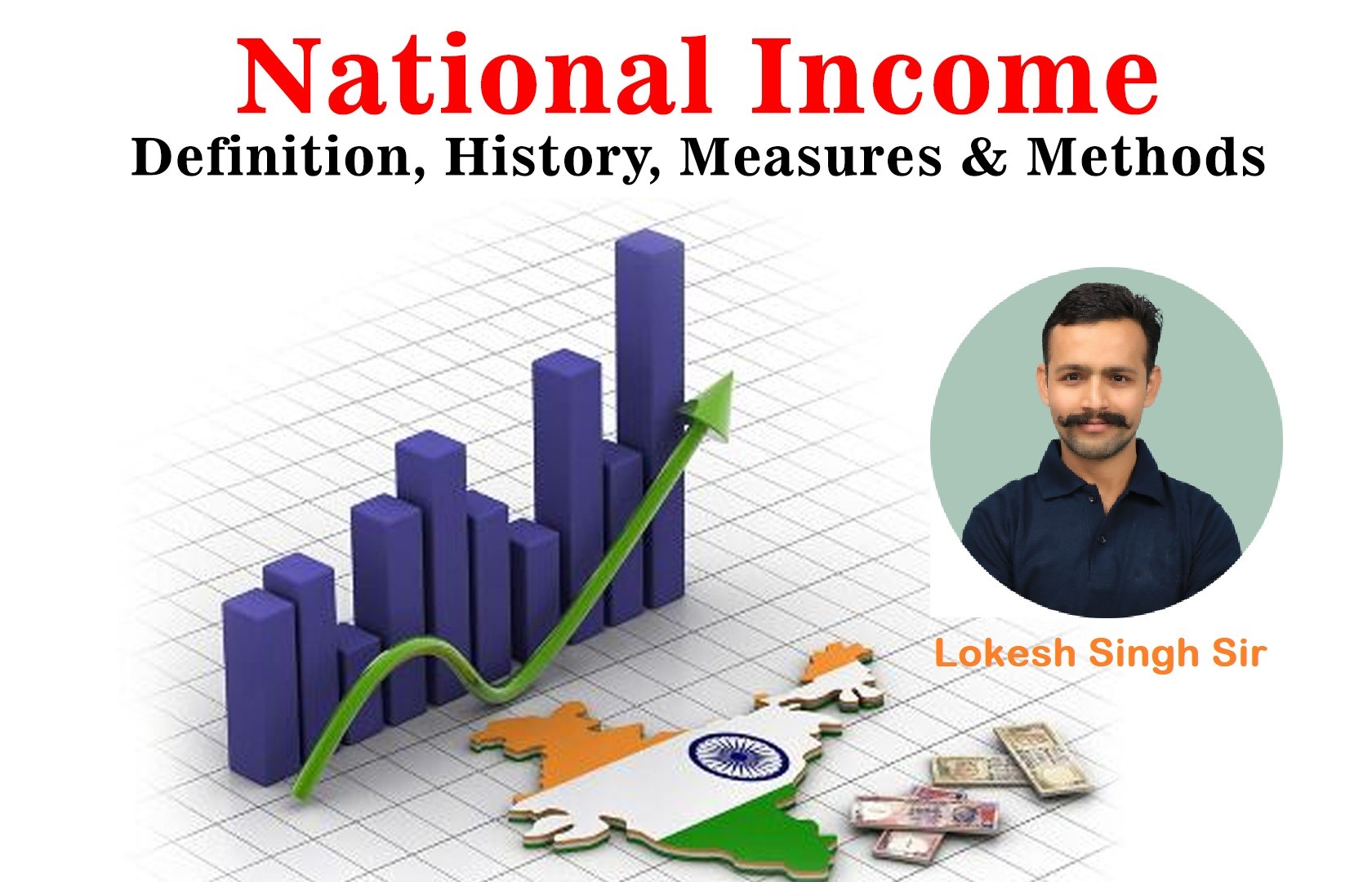National income is the final output of all new goods and services a country produces in one year. To estimate the total economic activity in a nation or region, a number of metrics are utilised, including the gross domestic product, the gross national product, the net national income, and the adjusted national income.
The term “national income accounting” refers to a group of procedures and guidelines that the government employs to gauge output and revenue, or alternatively, the economic activity of a nation over a specific time frame.
Along with other indicators like personal income and disposable income, the many methods used to calculate national income include:
GDP (Gross Domestic Product),
GNP (Gross National Product),
NDP (Net Domestic Product),
NNP (Net National Product).
GDP Of A Country
Gross Domestic Production (GDP) – it is the total (Market) value of all the goods and services finally produced within the domestic boundaries of a country, over a period of time of 1 year.
GDP is calculated at 2 prices, at Current Price and Constant Price. When it is calculated at current price, it is called Nominal GDP and when it is calculated at Constant Price, it is called Real GDP.
| GDP at Current Price is: | Nominal GDP |
| GDP at Constant Price is: | Real GDP (calculated at base year) |
GDP Deflator
When Nominal GDP is divided by Real GDP and the output is multiplied by 100, we get GDP deflator.
GDP Deflator = (Nominal GDP/Real GDP) x 100
GDP at Factor Cost
There are 4 factors of production – Labour, Land, Capital and Entrepreneurship.
- Labour = Wages
- Land = Rent
- Capital = Interest
- Entrepreneurship = Profit
When cost of these factors are considered, the result is GDP at Factor Cost.
How to calculate GDP at Market Price?
(Factor Cost + Taxes – Subsidy = Market Price)
GDP at Market Price = GDP at factor cost + Taxes – Subsidy

Gross National Production-GNP
Gross National Production is calculated from GDP.
When we add Net Income from abroad (Export – Import) to GDP, we get GNP.
GNP = GDP + Net Income from Abroad.
Net Income from abroad = Import – Export
Net National Production (NNP)
If we deduct Depreciation from GNP, we get NNP
NNP = GNP – Depreciation
It is NNP at Market Price
NNP at Factor Cost is National Income
NNP at factor cost = NNP (at Market Price) – Taxes + Subsidy
Per Capita Income
If we divide National Income with total population of a country, we get Per Capita Income.
Per Capita Income = National Income/Population.
Methods To Calculate GDP And National Income
There are 3 main methods to calculate the GDP and National Income of a country, these are:
- Income Method
- Expenditure Method
- Production or Gross Value Added (GVA) Method
In India we use Income method and Production or Gross Value Added method.
Income Method
(Wages + Rent + Interest + Profit) at Factor Cost + Taxes – Subsidy
To adjust the Inflation:
GDP at Constant Market Price.
(Wages + Rent + Interest + Profit) at Current Market Price + Taxes – Subsidy
Expenditure Method
= C + I + G + (X – M)
Production (GVA) Method
Total sale value – Cost of Intermediate Goods

Activities Excluded From Calculation Of GDP And National Income
GDP doesn’t cover:
- Underground Economy
- No-marketed activities (i.e., Household works)
- Barter exchange not counted.
- ‘Negative’ externalities (harm to environment)
- Opportunity cost (child labour) (It is a factor in Human Development Index)
- Income Inequality (it is measured by Gini’s coefficient)
Activities excluded from the estimation of National Income
- Intermediate Goods and Services
- Non-Economic Activities
- Transfer Payments –
- Unemployment incentives
- Payment on welfare schemes
- Scholarships, etc
- Capital Gain
- Illegal Activities
CSO And NSSO
Central Statistical Organisation (CSO)
In 1951, Central Statistical Organisation (CSO) was established.
Its headquarter is in Delhi.
It functions under the Ministry of Statistics and Program Implementation
Its main function is to collect, estimate and publish data of National Income.
Every year it presents its report – ‘National Accounts Statistics’ also known as White Paper.
CSO has divided the whole economy in 3 sectors, these are:
- Primary Sector – Agriculture Sector
- Forests, Fisheries, Mining etc.
- Primary sector has approximately 14% contribution to GDP
- Secondary Sector – Manufacturing Sector
- Manufacturing, Construction, Electricity etc
- It has approximately 28% contribution to GDP
- Tertiary Sector – Service Sector
- Insurance, Banking, Transportation, Telecom, Trade, Hotels, etc
- It has approximately 58% contribution to GDP
National Sample Survey Organisation (NSSO)
- It was established in 1950, but was reorganised in 1970.
- Its main function is to collect samples of data for Unorganised Sector of the economy.
- On the basis of its report, Government prepares developmental schemes for the related sectors.
.
You Can Follow on Youtube – Score Better
Read More Article of Indian Economics
Join Us on Telegram for More Update
.
